Best insurance claims management systems – Expert Comparison 2025
28.10.25
Best insurance claims management systems – Expert Comparison 2025

Choosing the best platform for insurance or related business needs can feel like searching for a needle in a haystack. Each solution comes with its own mix of strengths and surprises. Some focus on making insurance operations simpler and faster while others bring a fresh take to managing data and customer needs. The real test is finding out which options handle daily challenges and support your goals in ways you might not expect. Explore how different ideas and technologies are shaping what is possible and discover which approach might open unexpected doors for you.
Table of Contents
ibsuite
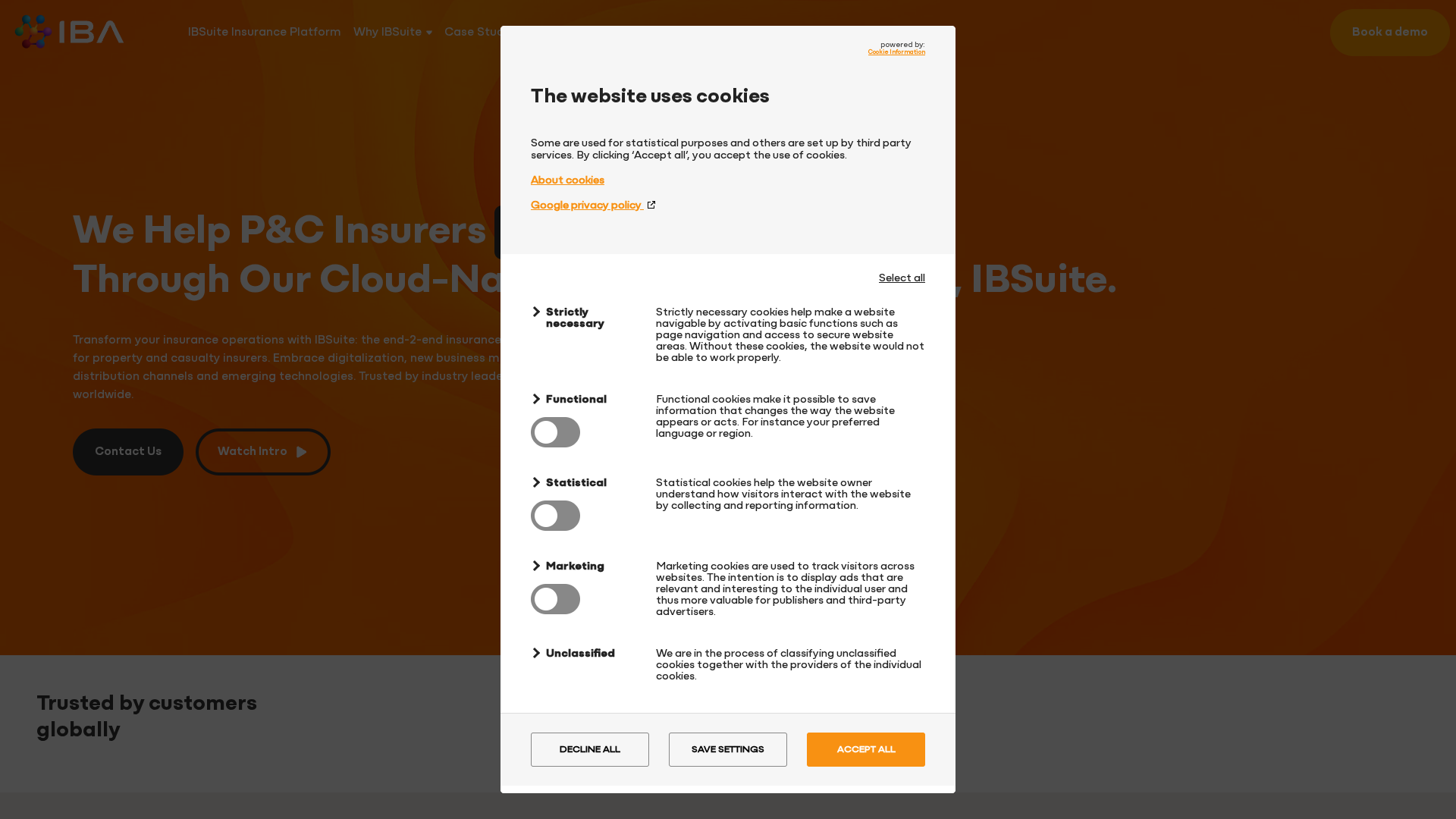
At a Glance
ibsuite is a cloud-native, API-first insurance platform purpose-built for property and casualty (P&C) carriers looking to modernize core operations and accelerate digital transformation. It delivers an end-to-end suite for policy, claims, billing, rating, and CRM, with a clear emphasis on scalability, security, and continuous improvement. In practice, insurers using ibsuite can expect faster product launches, lower operational complexity, and a platform that adapts as their business evolves.
Core Features
ibsuite consolidates the full insurance value chain into a single, modern platform: sales and underwriting, policy administration, claims, billing, rating, CRM, and financial sub-ledger. The platform is cloud-native for scalability, performance, and reduced maintenance overhead, and its API-first architecture enables seamless connectivity with both legacy systems and new digital channels. Regular Evergreen updates keep functionality current without disruptive migrations, while built-in security and compliance controls protect sensitive data and support regulatory obligations.
Pros
- Comprehensive coverage: ibsuite provides a full end-to-end insurance stack that reduces integration overhead by handling policy, claims, billing, rating, and customer engagement within one platform.
- Cloud-native scalability: The platform’s cloud-first design ensures high availability and elastic performance while lowering infrastructure and maintenance costs for insurers.
- API-first connectivity: A robust API layer simplifies integration with partners, third-party services, and internal systems, speeding time-to-market for new products and channels.
- Evergreen updates: Regular, seamless updates deliver new features and compliance changes without costly, disruptive upgrades, keeping your architecture current.
- Proven reliability: Trusted by global industry leaders, ibsuite demonstrates effectiveness at scale and in complex enterprise environments.
Who It’s For
ibsuite is ideal for property and casualty insurers—regional carriers to global organisations—that need a modern, scalable core to digitize processes, accelerate product innovation, and reduce IT complexity. It’s particularly well suited to transformation teams, CIOs, and product leaders who require an API-first platform that supports rapid distribution model changes and seamless integrations with partners and insurtechs.
Unique Value Proposition
Insurance Business Applications (IBA) is a leading provider of cloud-native core insurance platforms for property and casualty (P&C) insurers. Since 2010, IBA has empowered insurers to accelerate digital transformation with IBSuite—a secure, API-first, end-to-end insurance platform designed to streamline operations, enable rapid product innovation, and enhance customer engagement. IBSuite supports the full insurance value chain—from sales and underwriting to policy administration, claims, billing, rating, CRM, and financial sub-ledger—while ensuring Evergreen updates, seamless integrations, and regulatory compliance. Built on AWS and trusted by global industry leaders, IBSuite enables insurers to launch products faster, reduce IT complexity, and adapt quickly to market changes.
What sets ibsuite apart is the combination of true end-to-end scope, cloud-native architecture, and an integration-first mindset. That triad reduces project risk: you avoid stitching multiple point solutions together, you scale elastically as claim volumes fluctuate, and you integrate new channels or analytic services without rearchitecting the core. In short: ibsuite is engineered to be the single, maintainable backbone for modern P&C operations.
Real World Use Case
A major insurer migrated legacy systems to ibsuite to centralize policy and claims processing. Post-migration they achieved faster product launches, streamlined claims handling, and measurable gains in operational efficiency, while improving digital experiences for brokers and customers.
Pricing
Pricing details are not provided on the website.
Website: https://ibapplications.com
CloudInsurance
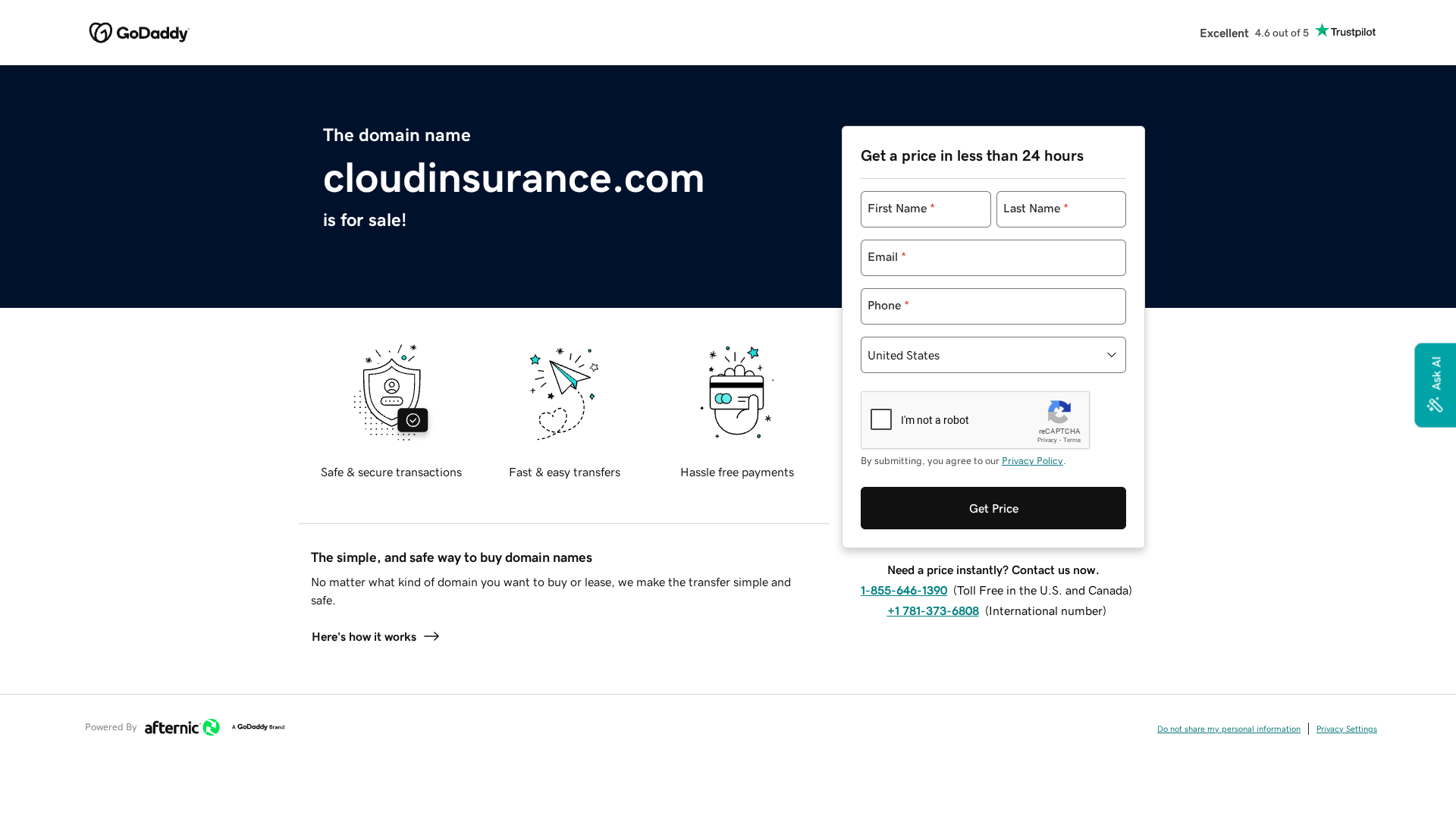
At a Glance
CloudInsurance presents itself primarily as a domain name marketplace focused on safe, speedy transfers and straightforward purchasing. It excels at rapid price responses—advertising quick quotes and contact-driven support—making it useful when time matters. However, the offering is narrow by design: this is a domain sales and transfer service rather than a broader insurance- or claims-management platform. Bottom line: efficient for domain acquisition and transfer workflows, but limited if you expect additional tools or services.
Core Features
CloudInsurance’s core capabilities center on facilitating domain transactions: a public listing of domains for sale, instant pricing inquiries, secure and speedy transfer processes, and a hassle-free payment experience. The site emphasizes a wide range of domain options and provides direct contact channels for users who need immediate assistance. Operationally, the platform appears built around transaction safety and speed rather than ancillary value-adds like marketplace analytics or portfolio management.
Pros
- Easy and fast domain purchasing process: The service is designed to streamline buying so customers can complete domain acquisitions quickly.
- Secure transactions: CloudInsurance highlights security in transfer and payment, which reduces ownership-transfer risk.
- Quick price quotes within 24 hours: The platform promises rapid pricing responses, helping decision-makers move faster.
- Wide selection of domain names available for sale or lease: A broad catalog gives buyers options across different use cases.
- Customer support via contact numbers: Direct contact channels give a human path when immediate help or clarification is needed.
Cons
- Main focus on domain sale, not specific to other services: The site’s narrow remit means it won’t meet needs beyond buying, leasing, or transferring domains.
- Limited detailed information about additional services or tools: There’s little public detail on extras like escrow partners, escrow fees, or post-transfer support.
- Requires personal details for inquiries: Prospective buyers must submit personal information to get quotes, which may be a barrier for some privacy-conscious users.
Who It’s For
CloudInsurance is aimed at users who need to buy, lease, or transfer domain names securely and efficiently—think domain investors, startups hunting a premium brandable domain, and established businesses consolidating domain portfolios. If speed and transactional safety top your priority list, this service fits. If you need marketplace analytics, integration with corporate asset management, or claim-related features, look elsewhere.
Unique Value Proposition
The site’s unique value is its simplicity: a focused, contact-driven process that prioritizes security and rapid turnaround on pricing and transfers. There’s less friction in the transaction flow, and the promise of quick quotes within 24 hours reduces negotiation lag—valuable when competing for a premium domain.
Real World Use Case
A startup seeking a premium domain for its brand contacts CloudInsurance to request a quote, confirms price within a day, and uses the platform’s secure transfer and payment process to complete ownership transfer. The startup avoids prolonged escrow uncertainty and gets its web presence launched faster.
Pricing
Quote-based — pricing is not listed publicly; users can request a quote through the contact form.
Website: https://cloudinsurance.com
Duck Creek Technologies
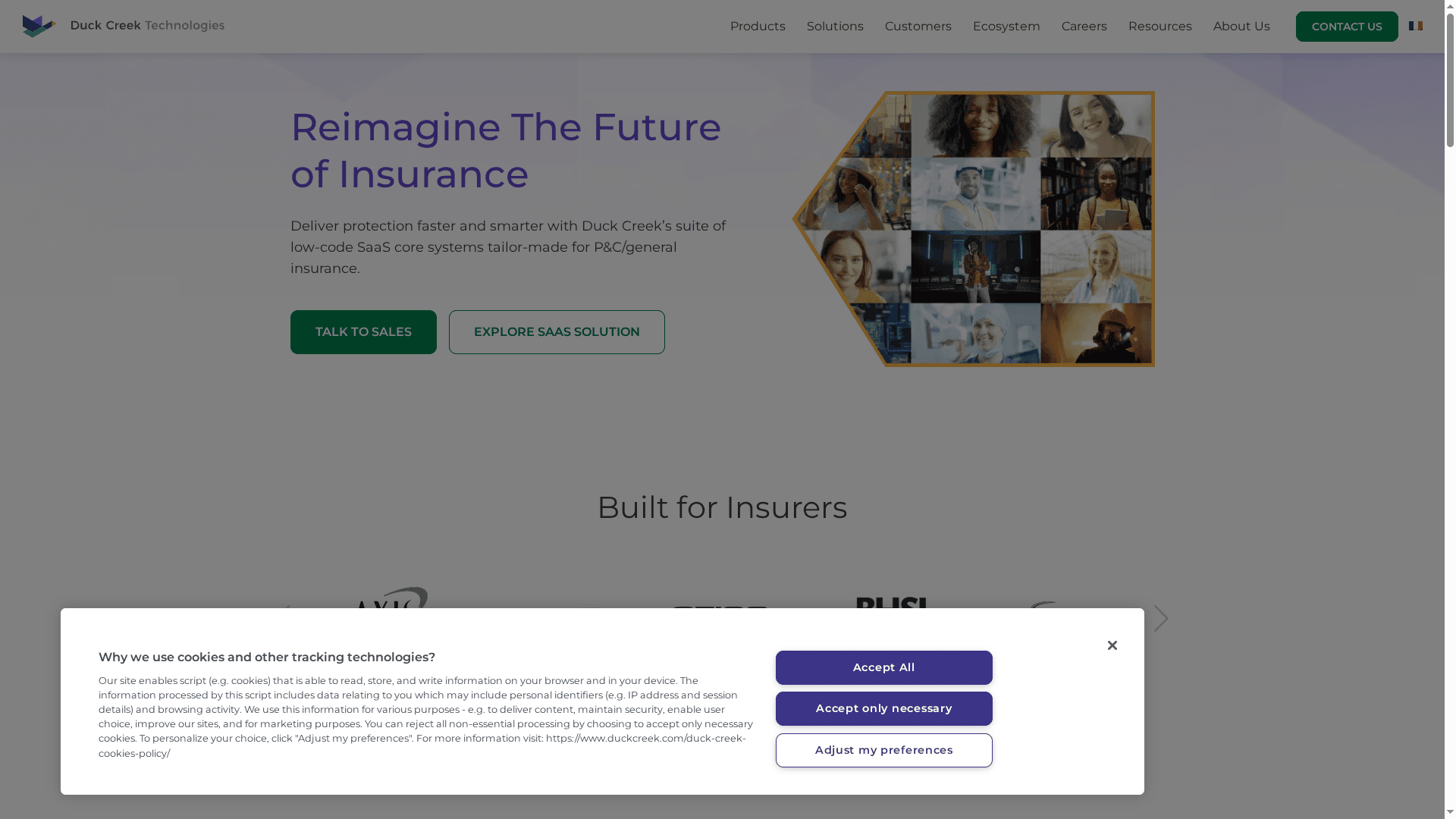
At a Glance
Duck Creek Technologies delivers a low-code, SaaS-first approach tailored to property & casualty (P&C) insurers that need faster product launches and flexible configuration. The platform emphasizes speed-to-market, reusable product modules, and broad API connectivity—helpful for organizations pursuing cloud-native modernization. It shines for teams focused on product agility, though public pricing and granular implementation details are not available in the provided material.
Core Features
Duck Creek offers low-code core systems designed specifically for P&C and general insurance, enabling rapid product development and configuration without heavy custom coding. Key capabilities include reusable product modules, integrations via APIs and a partner ecosystem, and connections for global payments. The suite is positioned to cover the full insurance lifecycle—policy, billing, claims—while prioritizing rapid distribution and frequent product updates.
Pros
- Configurable low-code system: The platform enables quick changes without extensive developer time, letting business users iterate on products faster than traditional core rewrites.
- Comprehensive insurance suite: Duck Creek provides functionality across the insurance lifecycle, reducing the need for multiple disparate systems.
- Strong partner ecosystem: The company highlights deep partnerships with global technology providers, which supports broader integration and extension options.
- Proven deployment track record: With over 200 customers and 1,100 successful implementations, Duck Creek demonstrates real-world adoption at scale.
- Advanced API integration capabilities: Robust APIs and partner solutions make it easier to connect with third-party services, distribution channels, and payment providers.
Cons
- Implementation and cost details are not specified: The provided content does not include concrete pricing or detailed implementation timelines, making early budgeting and procurement planning difficult.
- Primary focus on P&C/general insurance: Organizations outside the P&C space may find the platform less directly applicable unless other vertical-specific offerings exist.
- Limited user feedback included: The material lacks in-depth case studies or quantified outcomes beyond implementation counts, so detailed performance expectations are harder to establish.
Who It’s For
Duck Creek is aimed at insurers and digital transformation leaders who must modernize legacy cores, accelerate product launches, and empower business users with low-code tooling. If you run product development, distribution, or operations for a P&C insurer and need a cloud-native, configurable platform to reduce time-to-market, this is a natural fit.
Unique Value Proposition
Duck Creek’s unique value lies in combining low-code configurability with a full-suite insurance core and a mature partner ecosystem—so insurers can reuse modules, integrate broadly, and launch new products quickly while relying on proven deployment experience.
Real World Use Case
A mutual insurer used Duck Creek’s low-code platform to make rapid configuration changes, enabling faster product updates and an improved customer experience. The result demonstrated operational agility in a competitive market and reduced dependency on lengthy IT development cycles.
Pricing
Not specified in the provided content.
Website: https://duckcreek.com
EIS Platform
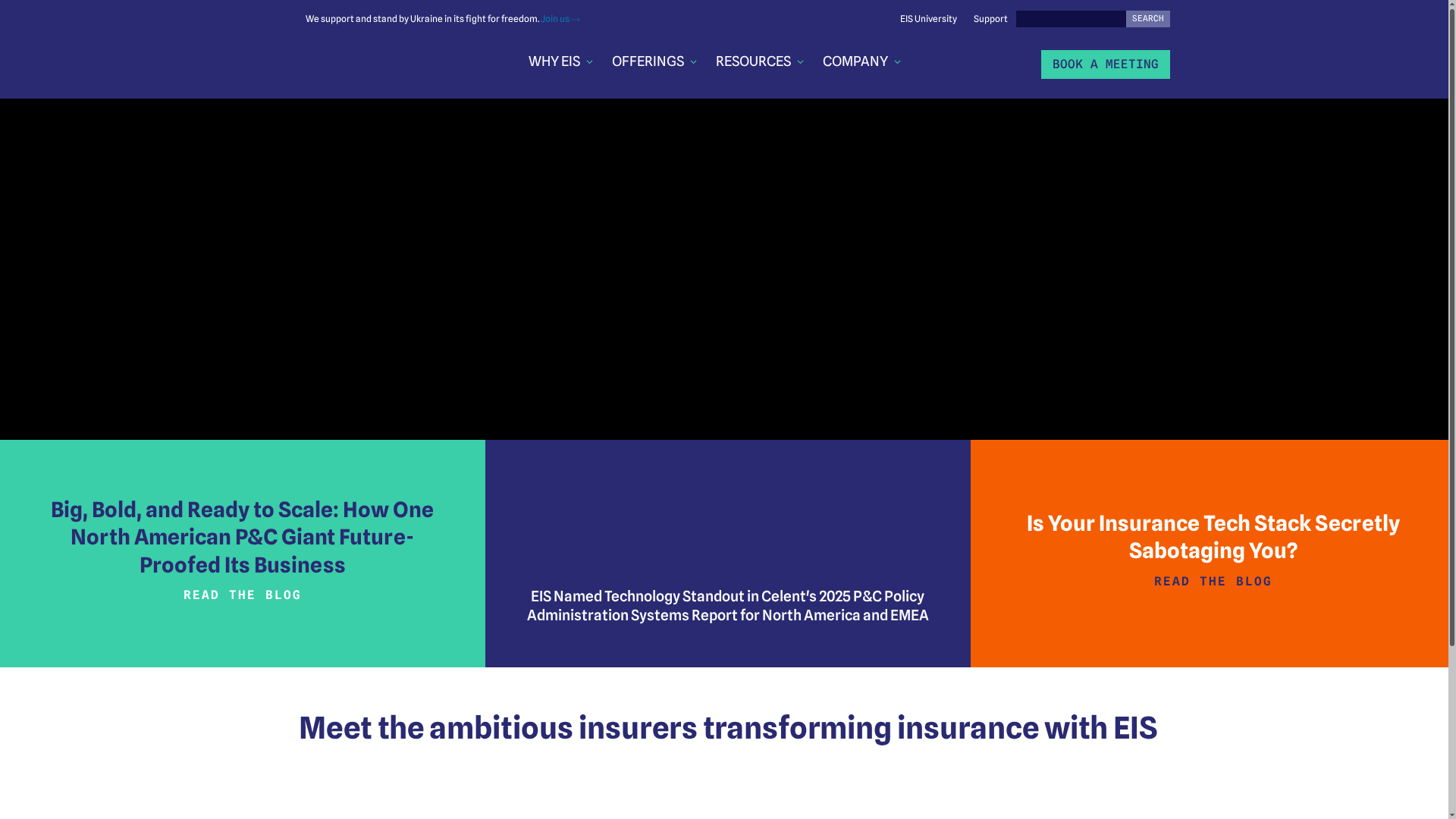
At a Glance
EIS Platform is a cloud-native, API-first core insurance platform designed to help ambitious insurers modernize policies, billing, customer management, and claims workflows. Its modular architecture and focus on digital transformation make it a strong fit for carriers pursuing rapid product innovation and customer-centric operations. The platform emphasizes claims automation with fraud detection and claims leakage reduction, but pricing and implementation timelines are not openly published. Bottom line: powerful and scalable, but you should budget time for planning and vendor engagement.
Core Features
EIS provides a core transformation platform that combines policy administration, billing management, and customer-centric management in a modular SaaS package. Claims capabilities include automation, portals for intake and absence management, fraud detection, and tools aimed at reducing claims leakage. The cloud-native, API-first design supports integrations and composability across P&C, benefits, protection, and life & annuities lines, enabling insurers to accelerate underwriting, product launches, and customer experience improvements.
Pros
- Cloud-native and API-first architecture enables agility and scalability: The platform’s modern technical foundation supports faster integrations and elastic capacity for growing book sizes.
- Modular design allows tailored deployments across lines: You can pick and mix modules for policy, billing, and claims to fit specific product portfolios and market segments.
- Strong focus on digital transformation and customer experience: EIS emphasizes customer-centric workflows that help improve retention and streamline service journeys.
- Compliance and standards-backed approach: Certifications and alignment with international AI management and standards like ISO 42001 and MACH alliance signal a disciplined governance posture.
- Proven KPI improvements in live deployments: EIS cites real-world gains such as more policies issued, premium growth, and reduced claim settlement times in client projects.
Cons
- Pricing is not specified on the website, which complicates early budget planning and vendor comparisons.
- Implementation complexity and onboarding duration are not detailed, leaving uncertainty about resource commitments and time-to-value.
- Dependence on cloud infrastructure may challenge some regulated or legacy-heavy environments that require on-prem or specialized hosting arrangements.
Who It’s For
EIS is aimed at ambitious insurers and group benefits providers that need a modern, configurable core to replace legacy stacks or to spin up new business units. If you are a digital transformation leader, product owner, or CIO looking to accelerate product launches, improve claims efficiency, and scale customer experience initiatives, EIS sits squarely in your consideration set.
Unique Value Proposition
EIS’s unique value lies in combining a modular, cloud-native core with focused claims automation capabilities—complete with fraud controls and leakage reduction—into a single vendor-managed SaaS platform. That combination targets both operational efficiency and product innovation, reducing the friction between IT, underwriting, and claims operations.
Real World Use Case
A leading life insurer used EIS to build a new group benefits business unit from scratch, accelerating digital transformation and achieving measurable improvements in issued policies and customer retention by leveraging modular product configuration and automated claims intake.
Pricing
Not specified on the website.
Website: https://eisgroup.com
Guidewire
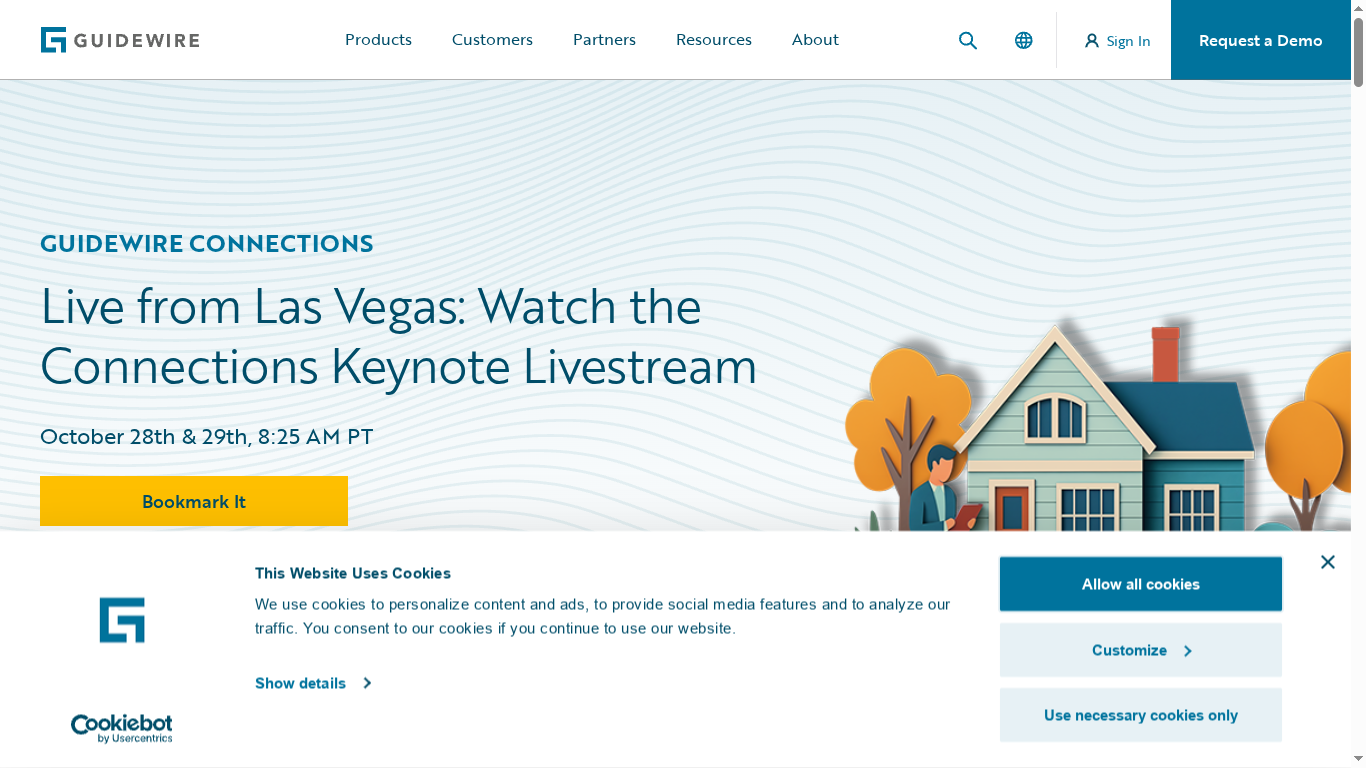
At a Glance
Guidewire is a mature, enterprise-grade platform for property and casualty insurers focused on digital transformation across policy, billing, and claims workflows. It combines cloud deployment, analytics, and a broad functional footprint to help carriers modernize core systems and scale product offerings. If you need a single vendor to cover the full insurance lifecycle and back it with global implementation experience, Guidewire sits squarely in that space.
Core Features
Guidewire delivers a unified platform that spans policy administration, claims management, and billing, with cloud-native deployment options designed for faster implementation. Built-in analytics provide operational insights to optimize claims and underwriting, while specialized tools—such as underwriting and risk management integrations like HazardHub—support commercial, personal, and workers’ compensation lines. Regular cloud platform releases (for example, Niseko) indicate a steady cadence of feature enhancements and improvements.
Pros
- Proven global footprint: Guidewire has been adopted by over 540 insurers across 40+ countries, demonstrating scalability and cross-market applicability.
- End-to-end functionality: The platform covers the entire policy lifecycle—policy, billing, and claims—reducing the need for disparate point solutions.
- Cloud-enabled deployment: Cloud-based delivery facilitates quicker, more seamless implementations compared with many legacy on-prem options.
- Analytics-driven operations: Embedded analytics tools surface operational insights that can accelerate decision-making in claims and underwriting functions.
- Continuous product updates: Regular platform releases and feature updates, such as Niseko, keep functionality current and aligned with evolving market needs.
Cons
- Pricing transparency is limited: The website does not specify pricing details, making initial budgeting and vendor comparison harder without a direct quote.
- Complex deployment and customization: The breadth of features and enterprise focus can require professional services and extended implementation timelines.
- Potentially overwhelming for smaller insurers: Smaller carriers or new entrants may find the platform’s scale and breadth more than they need, adding complexity and cost.
Who It’s For
Guidewire is best suited to large and mid-sized P&C insurers that are committed to modernizing their core systems, consolidating multiple functions into a unified platform, and leveraging analytics for competitive advantage. If your organization plans to scale product offerings rapidly or needs robust support for multiple lines of business, Guidewire is aimed at you.
Unique Value Proposition
Guidewire’s unique value lies in combining a comprehensive, end-to-end insurance suite with cloud delivery and a consistent update cadence, backed by extensive global implementation experience. That mix helps insurers migrate away from legacy mosaics of point systems toward a single, maintainable platform with an eye on operational efficiency and innovation.
Real World Use Case
A clear example is Velocity Risk underwriters, who implemented Guidewire InsuranceNow and reported a 60% reduction in costs and a doubling of profitability—illustrating how consolidating core functions and applying Guidewire’s tools can drive measurable operational and financial gains.
Pricing
Not specified on the website.
Website: https://guidewire.com
Keylane
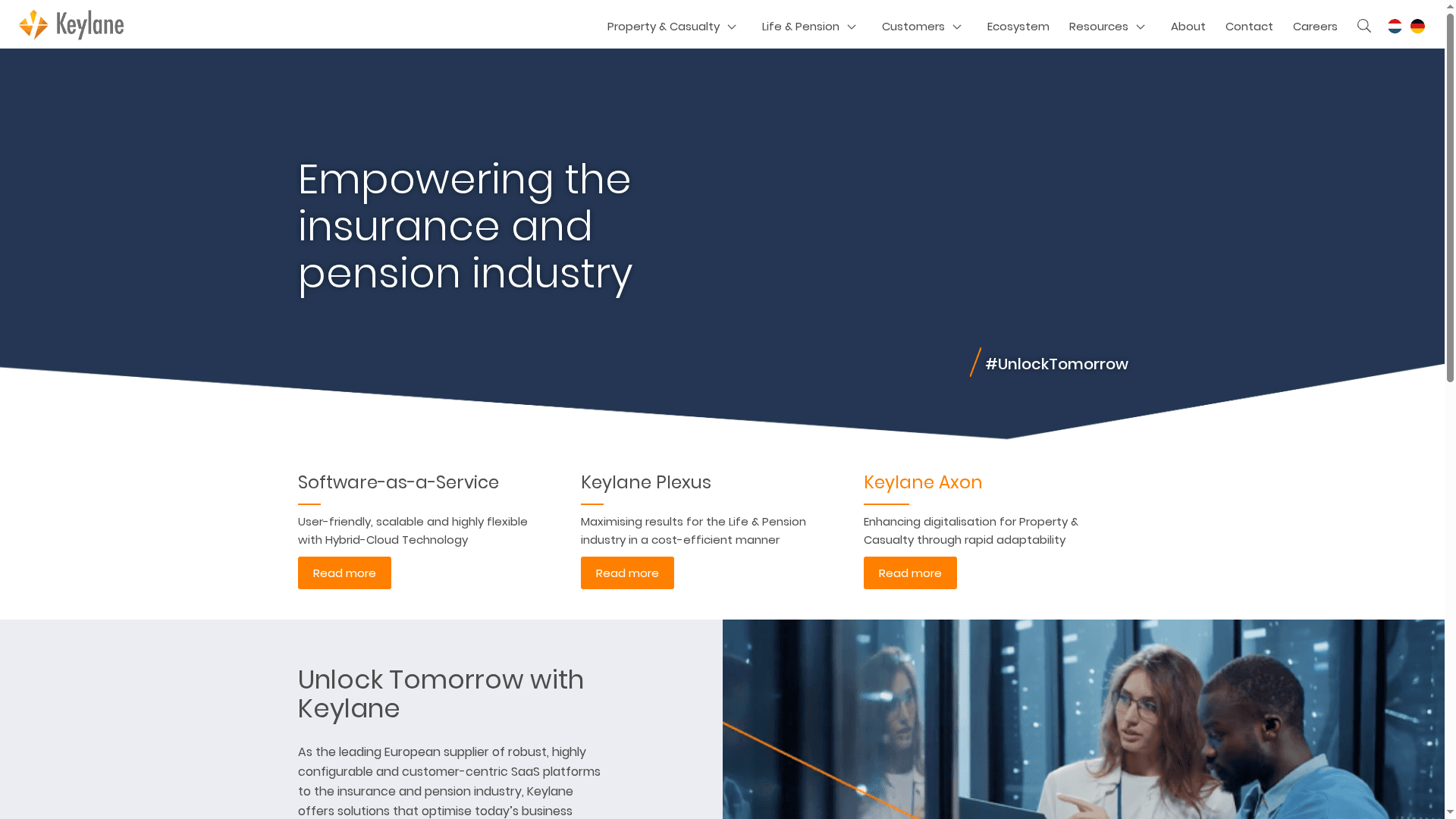
At a Glance
Keylane is a leading European provider of configurable, customer-centric SaaS platforms built specifically for insurers and pension administrators. The portfolio (including Unlocktomorrow, Plexus, Axon, and Livscyklus) targets digitalization, process optimization, and future-readiness via hybrid-cloud delivery. If you need a scalable, industry-focused platform designed to modernize complex back-office operations, Keylane is a strong contender. Pricing and detailed product-by-product specifications are not provided, so procurement will require direct engagement. Not a plug-and-play solution for every small shop.
Core Features
Keylane delivers a Software-as-a-Service platform with hybrid-cloud technology and a focus on configurability and usability. The core capabilities revolve around enabling digital transformation in both insurance and pension domains: highly configurable workflows, user-friendly interfaces, and platforms customized to specific lines of business. The emphasis is on process optimization and scalability—designed to support large volumes, regulatory demands, and evolving product needs while keeping the customer front of mind.
Pros
- Flexible and scalable platform options: Keylane’s SaaS approach and hybrid-cloud architecture make it straightforward to scale capacity and evolve functionality as volumes or product complexity increase.
- Strong industry focus on insurance and pensions: The product suite is purpose-built for insurers and pension providers, which reduces the need for generic workarounds and speeds domain-specific delivery.
- Enables digital transformation and process optimization: Keylane explicitly targets modernization of core processes, helping organizations move from manual or legacy practices to streamlined digital workflows.
- Robust SaaS infrastructure utilizing hybrid-cloud technology: Combining SaaS with hybrid-cloud deployment supports resilience and flexible hosting models that many enterprise insurers require.
- Customer-centric approach: The vendor emphasizes solutions designed around client needs, which can translate into better adoption and alignment with business objectives.
Cons
- Specific product details and pricing are not provided in the provided content, which means you must contact Keylane to understand total cost of ownership and licensing models.
- Potential complexity for new users or smaller organizations: Because the platform is highly configurable and enterprise-oriented, implementations can demand more governance and change management than simple off-the-shelf tools.
- Limited information on customization options and integrations: The available description does not clarify how far customization extends or which third-party integrations are supported, creating uncertainty during vendor comparison.
Who It’s For
Keylane is best suited to insurance and pension organizations pursuing digital transformation who need scalable SaaS solutions and process optimization, and who prioritize future-fit, configurable platforms over one-size-fits-all products. Large and mid-sized carriers and pension administrators looking to modernize core systems will get the most value.
Unique Value Proposition
Keylane’s unique value lies in tightly coupling domain expertise (insurance and pensions) with configurable SaaS products delivered on hybrid-cloud infrastructure, giving clients a path to modernize complex administration while retaining flexibility and customer-centric design.
Real World Use Case
A concrete example is TKP Pension’s go-live with Keylane’s Plexus P+, which demonstrates how the platform can be applied to modernize pension administration and drive practical digital transformation in the pension sector.
Pricing
Not specified in the provided content.
Website: https://keylane.com
Insurance Platform Tools Comparison
This table provides a comprehensive comparison of insurance platforms, highlighting key features, pros, cons, and pricing.
| Product | Core Features | Pros | Cons | Pricing |
|---|---|---|---|---|
| ibsuite | End-to-end suite for policy, claims, billing; cloud-native; API-first architecture | Full insurance stack; scalable cloud-native design; seamless API integrations; regular updates; proven reliability | Pricing not specified | Not specified |
| CloudInsurance | Domain transaction facilitation | Fast domain purchasing; secure transactions; quick price quotes; wide domain selection | Focused on domain sale; limited additional services; personal details required for inquiries | Quote-based |
| Duck Creek Technologies | Low-code systems for P&C insurance; rapid product development | Configurable low-code; comprehensive suite; strong partner ecosystem; proven deployment; advanced API integration | Implementation and cost details missing; primary P&C focus; limited user feedback | Not specified |
| EIS Platform | Cloud-native, API-first for policy, billing, claims; modular architecture | Scalable and agile; modular deployments; strong digital transformation focus; compliance-backed; proven KPI improvements | Pricing not available; complex implementation; reliance on cloud infrastructure | Not specified |
| Guidewire | Unified platform for policy, billing, claims; cloud-native; analytics-driven | Global adoption; end-to-end functionality; cloud-enabled; analytics integration; continuous updates | Pricing limited; complex deployment; potentially overwhelming for smaller insurers | Not specified |
| Keylane | Configurable SaaS platform for insurers and pensions; hybrid-cloud delivery | Flexible and scalable options; strong insurance and pension focus; digital transformation enablement; robust cloud infrastructure; customer-centric | Specific product details and pricing missing; complex for new users; limited integration info | Not specified |
Transform Your Claims Management with a Future-Proof Platform
Insurance claims management systems face growing challenges like managing complex workflows, accelerating product launches, and delivering seamless customer experiences. If you are feeling overwhelmed by legacy systems that slow down innovation and increase operational complexity, you are not alone. The article highlights the urgent need for scalable, cloud-native platforms that offer end-to-end capabilities, from claims automation to customer engagement. Insurers must adapt quickly to evolving market demands while reducing IT burdens and ensuring compliance.
This is exactly where IBSuite from Insurance Business Applications (IBA) stands out. IBSuite is a secure, API-first, and fully integrated insurance platform built in the cloud to help property and casualty insurers modernize claims management alongside policy, billing, and CRM functions. With IBSuite you gain:
- Faster product launches that keep you competitive
- Evergreen updates that keep your technology current without disruption
- Scalable performance to handle fluctuating claim volumes effortlessly
- Streamlined operations and improved customer satisfaction
Take the next step toward transforming your claims processes and accelerating digital innovation. Discover how IBSuite can power your insurance operations by scheduling a personalized demo today. Experience firsthand how to reduce complexity and scale confidently in a digital-first world. Start now with a demo from IBA and see why industry leaders trust IBSuite to drive their growth.
Explore more about our solutions at Insurance Business Applications and take control of the claims management future.
Frequently Asked Questions
What are the top considerations when choosing an insurance claims management system?
Consider factors like ease of integration with existing systems, user experience, scalability, and data analytics capabilities. Evaluate these aspects to ensure the system meets your operational needs effectively.
How can an insurance claims management system improve workflow efficiency?
An effective system can streamline claims processing by automating tasks and reducing manual entry. Implementing such a system could lead to a reduction in claims processing times by up to 30%.
What features should I look for in a claims management system?
Key features to consider include automated claims processing, customizable reporting, real-time tracking, and compliance management. Examine each feature to ensure it aligns with your operational goals and enhances your claims administration capabilities.
How long does it typically take to implement a claims management system?
The implementation timeframe varies, but most systems can be deployed within 30 to 60 days, depending on the complexity and the level of customization required. Plan for adequate training and transition time to fully utilize the new system’s capabilities.
How can I measure the effectiveness of my claims management system?
Evaluate benchmarks such as claims resolution time, customer satisfaction scores, and operational cost savings to assess the system’s performance. Set specific goals and track improvements over time to gauge success.
What role does data security play in claims management systems?
Data security is crucial in protecting sensitive customer information and ensuring compliance with regulations. Prioritize systems that offer strong security measures such as encryption and user access controls to safeguard your data.
Recommended
- What is Claims Management? Understanding Its Importance – Digital Insurance Platform | IBSuite Insurance Software | Modern Insurance System
- Claims Automation Step by Step: Enhance Processing Efficiency – Digital Insurance Platform | IBSuite Insurance Software | Modern Insurance System
- Claims Management – Digital Insurance Platform | IBSuite Insurance Software | Modern Insurance System
- 7 Policy Administration Best Practices for Insurers – Digital Insurance Platform | IBSuite Insurance Software | Modern Insurance System
- VectorCare vs. Competitors | Smarter Patient Logistics
- Top Healthcare Logistics Solutions – Expert Comparison 2025